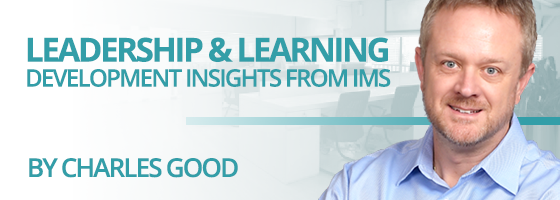Communicating with impact is at the core of effective leadership. In many cases, the leader’s job is not to do something but rather to communicate what needs to be done. Effective communication not only improves the bottom line and empowers employees, but also builds trust and empowers change. Every great leader that has made an impact with
Patrick Donadio, author of the best-selling book Communicating with IMPACT, provided a framework for effective communication in a recent I.M.S. program. He uses the acronym I.M.P.A.C.T. to communicate each part of his model.
I – INTENTION
Effective communication starts with identifying the intention of the communication. Patrick states that if people understand the ‘Why’, they are more likely to accept the ‘How’. Remember to establish the intent before the content.
The L.F.I. framework works well for clarifying your Laser-Focused Intention (L.F.I.). The script for this is below.
- I am going to talk about _______ (message) with _________ (person) so they will _______ (activate and do something) by ________ (certain time or deadline).
M – MESSAGE
Next comes the message of the communication. The method will be determined in part by the receiver and the form of communication (virtual, face-to-face or written). However, the message should have an opening, body, and closing in all cases. The beginning is designed to get their attention and introduce the content. The body is where you communicate the majority of the message. While the closing should not only summarize but provide a call to action.
P – PERSONALIZE
You want to personalize or customize the content based on the receiver. Find out as much as you can about the person, such as their education, experience, interests/hobbies, opinions, beliefs, etc. The more you learn about the receiver, the more effective your communication.
A – ACTIVATE
This part deals with engagement. In a virtual setting, this is even more difficult. As Patrick notes, the key to effective communication is engaging the receiver by using stories, visuals, questions, humor, or group activities.
C – CLARIFY
Don’t forget to clarify since many of us assume the receiver is receiving the same message by asking clarifying questions or summarizing the message. The receiver should also actively listen to clarify and check for understanding as you deliver the message.
T – TRANSFORM
When communicating with impact the end goal is to have it result in some form of action. Therefore, the person communicating should be mindful to include a summary of what he or she stated and what action will be taken, by who and when it will be completed (for every WHAT, identify a WHO and ask WHEN).
Successful leaders are always looking for improved ways to communicate with impact and influence. A couple of great books that will help develop stronger communication skills are the following. The book, The Presentation Secrets of Steve Jobs, is excellent and offers a list of 18 essential elements that every communicator needs to do to improve your presentation skills. Another great book on the topic is FIVE STARS: The Communication Secrets to Get from Good to Great by Carmine Gallo. Throughout the book, the author identifies the communication secrets of many of the great orators throughout history.
If you’re delivering bad news you might want to also look at what Dr. Michael Roberto said in our April 2020 blog.
Being able to communicate and tell stories to your stakeholders effectively is at the cornerstone of every leadership success. According to Simon Sinek, “Great leaders communicate, and great communicators lead.”
ABOUT CHARLES GOOD
Charles Good is the president of The Institute for Management Studies, which provides transformational learning experiences that drive behavioral change and develop exceptional leaders. Charles is an innovative and resourceful leader who specializes in bringing people together to develop creative organizational and talent strategies that enable business results. His areas of expertise include assessing organizational skill gaps and leading the design, creation and delivery of high impact, innovative learning solutions that achieve business goals.

3 Comments